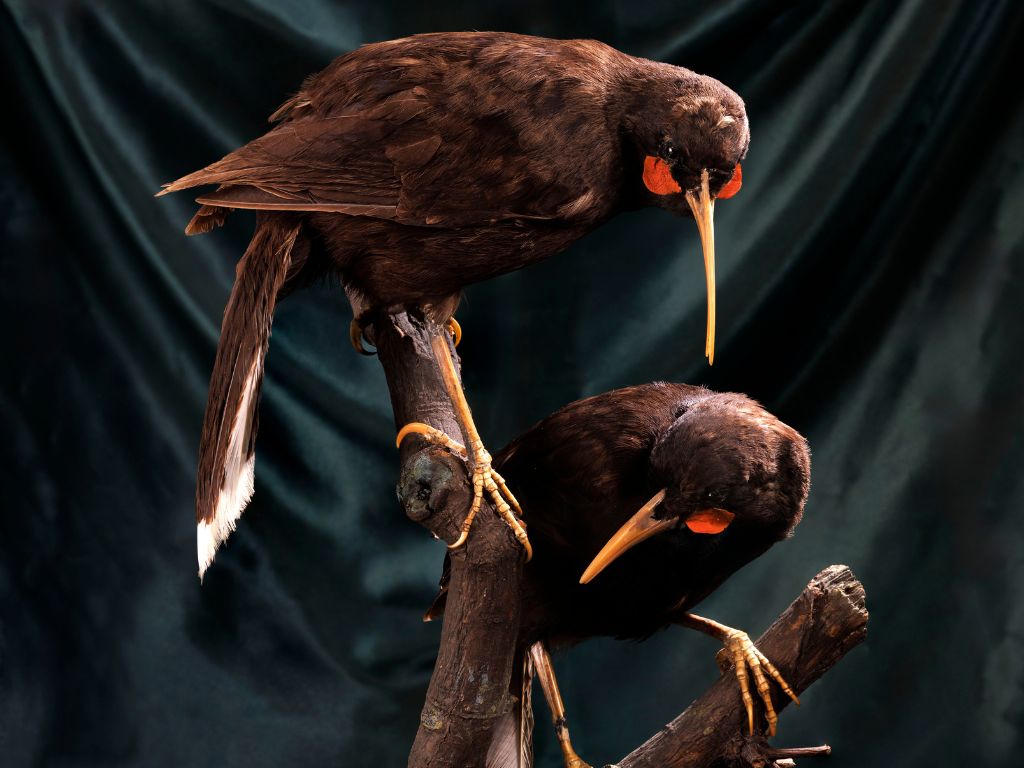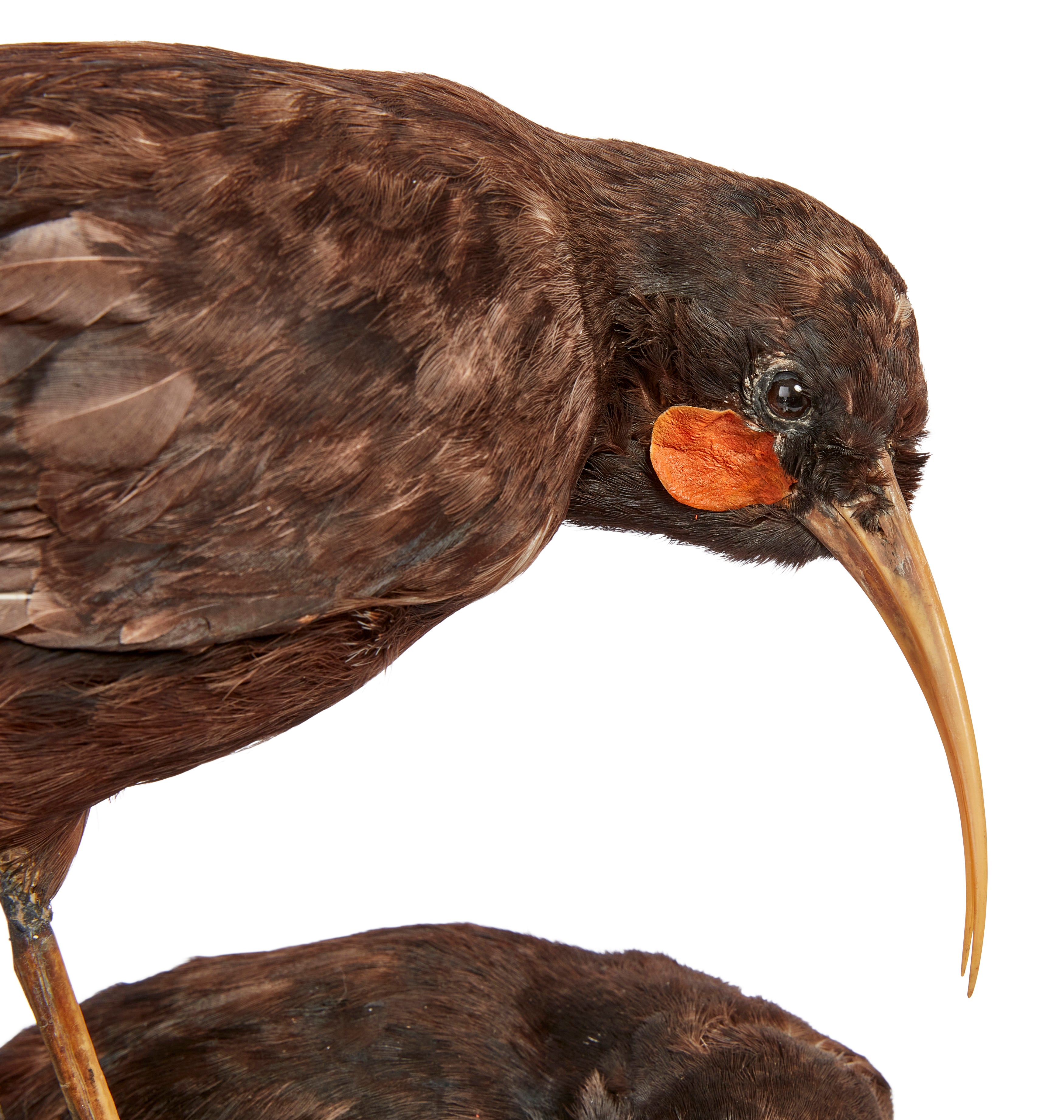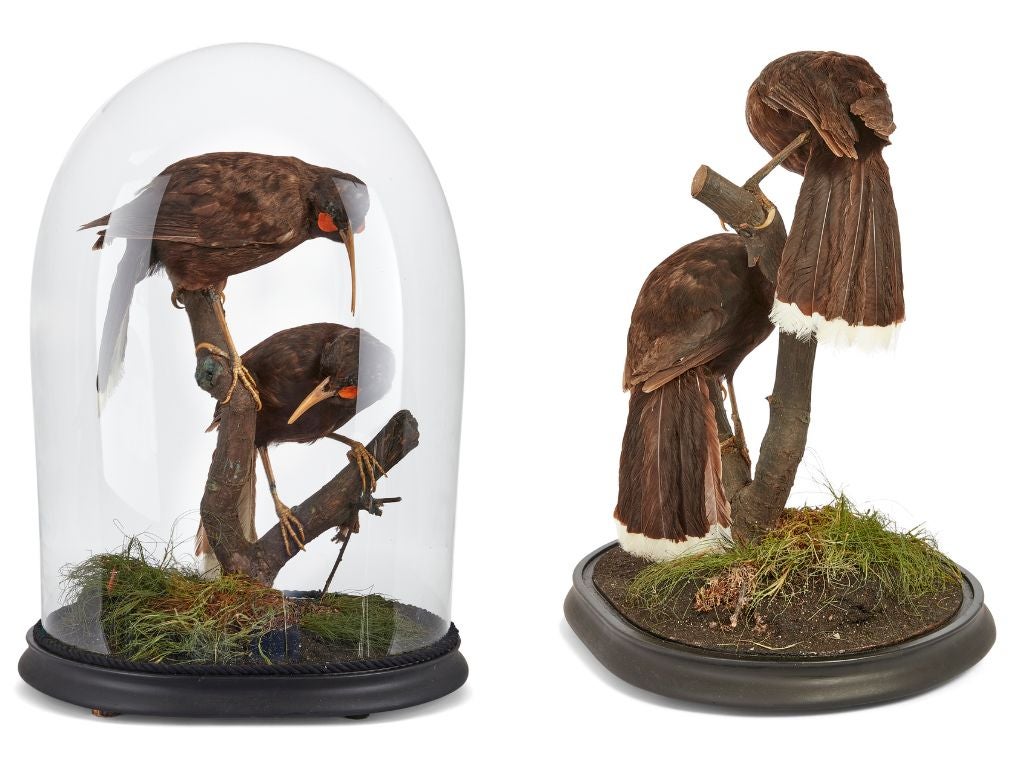Two ‘precious’ specimens of extinct New Zealand huia bird up for auction in England
Bird, special to Māori people, was last seen in 1907

Your support helps us to tell the story
From reproductive rights to climate change to Big Tech, The Independent is on the ground when the story is developing. Whether it's investigating the financials of Elon Musk's pro-Trump PAC or producing our latest documentary, 'The A Word', which shines a light on the American women fighting for reproductive rights, we know how important it is to parse out the facts from the messaging.
At such a critical moment in US history, we need reporters on the ground. Your donation allows us to keep sending journalists to speak to both sides of the story.
The Independent is trusted by Americans across the entire political spectrum. And unlike many other quality news outlets, we choose not to lock Americans out of our reporting and analysis with paywalls. We believe quality journalism should be available to everyone, paid for by those who can afford it.
Your support makes all the difference.A pair of preserved huia, an extinct bird last sighted in early 20th century, are going on auction in London next month, competing for attention with a slice from the wedding cake of Queen Elizabeth II and Prince Philip, a Louis Vuitton wardrobe trunk, and an engraved two-handled cup that celebrated Prince Edward coronation.
The male and female huia specimens are set to go under the hammer on 2 October at the Roseberys London’s fine and decorative art auction.
A huia feather auctioned in May this year set the record for the most expensive feather ever sold by fetching £22,409.
The huia bird was last spotted in 1907 on New Zealand’s North Island.
The female huia of the pair has the trademark long, slender and curved beak it used to extract larvae from solid wood, while the male’s stout and short beak, used like an axe to dig into decaying wood and extract huhu larvae and other insects, shines through the glass dome that the birds have been preserved under.
The birds are perched delicately on tree branches in a naturalistic habitat, appearing to probe their surroundings in the taxidermied form as the female huia bird looks at her male counterpart below.
“They are preserved under a glass dome, which is not original, which has ensured no insect damage. The colour of the wattles have been retouched but otherwise they remain in very good condition. It is likely that they were once part of a larger cased display of taxidermy birds, but at some stage the precious birds were removed to be displayed on their own,” Anna Evans, the head of sales at Roseberys London, said.

The huia, a wattlebird belonging to a family of songbirds unique to New Zealand, was special to the indigenous Māori people who used its feathers to decorate headpieces for tribal chiefs and elders. They also considered its feathers precious for trading and gifting.
The specimen pair going on auction have deep metallic bluish-black plumage, orange wattles and white-tipped tail feathers.

“Examples rarely appear on the open market, particularly of full-mounted male and female adults,” Ms Evans told The Independent.
“Extinct species are coveted by taxidermy collectors and we hope to see many of them in the room on the day of the auction.”
She anticipates strong interest in particular from collectors in New Zealand and the UK. “Hopefully, previous sales of huia taxidermy or feathers will pique the interest of buyers and give collectors who missed out another opportunity to acquire a rare extinct species,” she said.
The pair is estimated to be sold for £40,000-£60,000.
A huia pair from the Victorian era auctioned last September fetched £220,000.

The huia was driven to extinction by logging and burning of forests by European settlers in the 19th century looking to farm in the lowlands of the North Island. It was also hunted by fauna enthusiasts.
“Huia birds are sacred to the Maori community, who we understand are keen to raise awareness of the cultural and spiritual significance of this beautiful bird in the international audience,” Ms Evans said.
The sale of the Roseberys specimens will spotlight the need to preserve the natural habitats of all endangered species and prevent the extinction of other species, she said.
Join our commenting forum
Join thought-provoking conversations, follow other Independent readers and see their replies
Comments